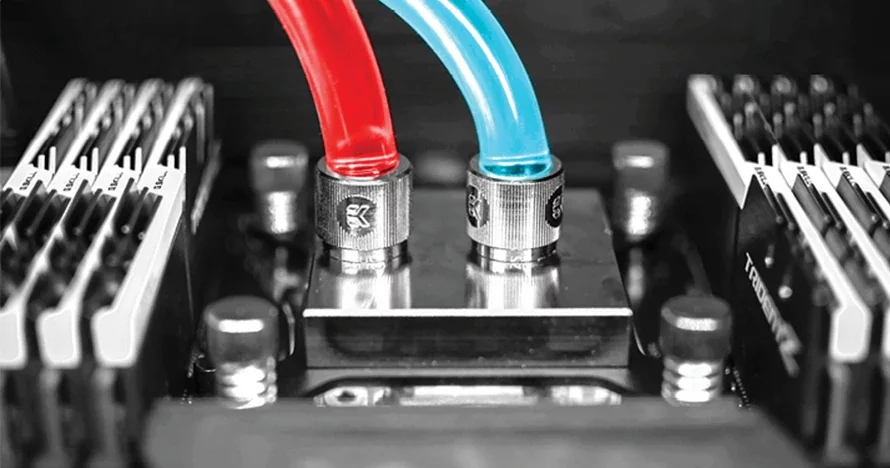In 2025, the Liquid Cooling Debate Has Never Been More Ripe
As GPUs and CPUs grow more powerful—and thermally demanding—the question on everyone’s lips is: Is liquid cooling needed or an expensive luxury? With more professionals working in demanding conditions and gamers overclocking hardware to the max, it’s one worth investigating.
This article goes deeper into the current state of liquid cooling systems, determining whether or not they are truly needed for high-end work or just a style upgrade with diminishing returns.
What Is Liquid Cooling?
Liquid cooling is an architecture using a coolant (most commonly water-based) to draw heat off computer components and shed it away via a radiator and fans. In contrast to the standard air cooling using metal heatsinks and air movement, liquid cooling transfers heat better—especially under sustained loads.
Two Liquid Cooling Systems:
AIO (All-in-One) Coolers: Pre-fabricated, sealed units which are easy to install.
Custom Loops: Extremely customizable systems for maximum performance and appearance.
Why the Frenzy in 2025?There are three reasons liquid cooling is more relevant than ever in 2025:
- Greater Power Consumption of Components
With processors like Intel’s Core Ultra 9 and AMD’s Ryzen Threadripper Pro 7995WX, TDPs can be over 300W in workstations. Normal air coolers might not be sufficient enough to keep temperatures in check, especially with extended rendering or simulation jobs. - Small PC Builds with High Performance
Mini-ITX and mini builds are becoming increasingly popular, but mini cases sacrifice airflow. Liquid cooling solves this problem by passing heat directly to a radiator placed in a strategic position inside the case. - Aesthetic and Functional Integration
Current AIOs now include software control, RGB lighting, silent fans, and even AI-based cooling profiles. They’re quieter, more intelligent, and more beautiful—sophisticated enough for gamers and creative professionals.
Use Cases: Where Liquid Cooling Excels✔️ 3D Rendering & Video Editing
Developers working on applications like Adobe Premiere Pro, Blender, and DaVinci Resolve welcome sustained CPU/GPU utilization. Liquid cooling prevents thermal throttling and offers consistent performance.
✔️ 4K/144Hz Gaming
AAA gaming with ultra settings, especially using RTX 4090-class GPUs, generates tremendous heat. Liquid-cooled setups maintain temperatures lower and sound levels quieter compared to air-cooled setups.
✔️ AI Workloads & Simulation
Large data scientists and engineers tend to leave systems running for hours with big data sets or simulations. You need a good cooling system to protect components and reduce noise.
When Liquid Cooling Is Overkill
While it’s powerful, liquid cooling isn’t always the way to go:
❌ Basic Productivity or Office Work
If you do just browsing, spreadsheets, or coding, you don’t need anything more than an effective air cooler.
❌ Higher Cost and Maintenance
AIO coolers start around $100, with custom loops over $500. Added to that, custom systems require occasional maintenance, potential leak testing, and even coolant replacement.
❌ Risk of Failure
As rare as it is, pump failure or leaks in custom systems can damage components. Users must weigh this against the benefit of slightly lower temperatures.
Liquid Cooling vs. Air Cooling: 2025 Showdown
Feature Liquid Cooling (AIO/Custom) Air Cooling
Cooling Efficiency Excellent under load Good to moderate
Noise Levels Lower on average Louder under stress
Maintenance Moderate to high Minimal
Aesthetics Sleek and modern Functional but bulky
Cost Considerate to high Budget-friendly
2025 Cooling Technology Advancements
Liquid cooling setups are smarter and safer than ever:
Smart Cooling Algorithms: Dynamically adjust fan speeds according to workload and ambient room temperature.
Non-conductive Coolants: Reduced risk of electrical damage from leaks.
Modular Components: Easier upgrades and repairs for custom loops.
Pre-filled GPU Blocks: Plug-and-play liquid-cooled GPUs are now the norm.
Verdict: Overkill or Necessity?
If you’re running heavy workloads—such as 4K video editing, CAD modeling, AAA games, or AI training—liquid cooling is less of a nicety and more of an absolute necessity in 2025. It delivers consistent performance, noise reduction, and increased lifespan for your expensive components.
But if you don’t need much out of your computing, the additional cost and maintenance may not be worth it. Air coolers have also made significant progress and are still an excellent choice for most.
Final Thoughts
Liquid cooling matured in 2025. It’s no longer a matter of aesthetics and ego-gratifying—now it’s an operating, often necessary component of high-performance systems. Whether building a workstation, gaming enclosure, or next-gen mini-PC, you need to know your cooling needs.
Is liquid cooling a necessity or an overkill? Who knows? But what is certain—is that with the advancement of hardware, so must your cooling strategy.



